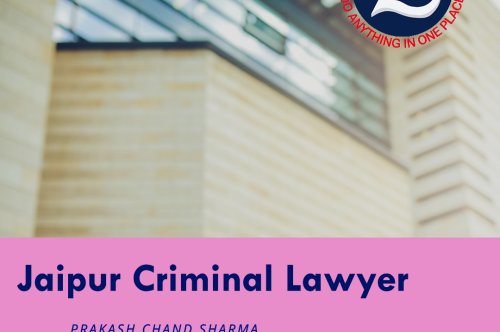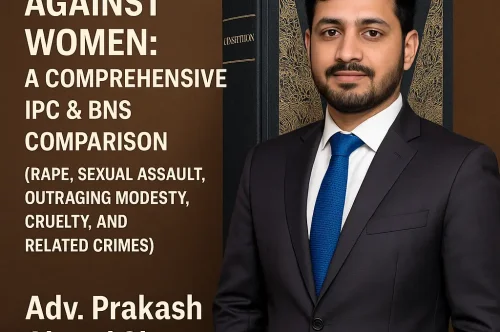Hurt, Grievous Hurt & Defamation: IPC vs BNS | Adv. Sharma

Hurt, Grievous Hurt & Defamation: A Complete Comparative Analysis Under IPC & BNS (2023)
By Adv. Prakash Chand Sharma
Chartered Engineer | High Court Advocate | CAO
Founder – Zumosun Universe, Techlam Legal Solutions, JPSD Taxsun LLP
Powered by: TheLegalCourt.com | TheLegalBank.com
Introduction
“Hurt”, “Grievous Hurt” and “Defamation” are among the most frequently invoked offences in India. They are commonly seen in:
-
Police FIRs
-
Corporate disputes
-
Domestic violence cases
-
Workplace misconduct
-
Street offences
-
Political allegations
-
Media & online content disputes
With the introduction of the Bharatiya Nyaya Sanhita (BNS) 2023, many IPC sections have been renumbered but core principles remain the same.
This article provides a complete IPC–BNS comparison with practical applicability for legal professionals, corporates, HR teams, security heads, investigators, and compliance officers.
🌟 PART A — HURT (IPC vs BNS)
IPC Section 319 → BNS Clause 115
Definition:
A person commits “hurt” when he:
“Causes bodily pain, disease, or infirmity to any person.”
Key elements:
✔ Bodily pain
✔ Physical injury
✔ Temporary disability
✔ No requirement of permanent damage
Punishment
✔ IPC Section 323 → BNS Clause 115(2)
✔ Simple hurt, non-grievous
✔ Up to 1 year imprisonment / fine / both
🌟 PART B — GRIEVOUS HURT (IPC vs BNS)
IPC Section 320 → BNS Clause 116
Eight categories of Grievous Hurt (same in IPC & BNS):
-
Permanent damage to eyesight
-
Permanent hearing loss
-
Loss of limb or joint
-
Permanent impairment of limb or joint
-
Permanent disfiguration of head/face
-
Fracture or dislocation of bone or tooth
-
Any hurt endangering life
-
20 days inability to perform ordinary work
Key legal point:
👉 Fracture = Grievous Hurt ALWAYS, even hairline fracture.
Punishment
✔ IPC Section 325 → BNS Clause 116(3)
✔ Up to 7 years imprisonment
🌟 PART C — AGGRAVATED GRIEVOUS HURT
Example:
Hurt caused with dangerous weapons.
✔ IPC 326 → BNS Clause 117
Punishment: Up to 10 years / life (same severity)
🌟 PART D — DEFAMATION (IPC vs BNS)
IPC Section 499 → BNS Clause 356
Definition:
A person defames another when he:
“Makes or publishes any imputation
concerning any person
intended to harm reputation.”
Key ingredients:
✔ Imputation (spoken/written/visible)
✔ Publication to a third person
✔ Intention OR knowledge to harm reputation
Forms of Defamation:
-
Slander (spoken)
-
Libel (written/printed)
-
Online/social media defamation
-
Corporate reputation harm
-
False allegations
-
Media reporting
-
Political accusations
Punishment
✔ IPC 500 → BNS Clause 358
✔ Simple imprisonment up to 2 years / fine
🌟 PART E — EXCEPTIONS TO DEFAMATION (Very Important)
(Identical in IPC & BNS)
-
Truth made for public good
-
Opinion regarding public conduct
-
Reports of judicial proceedings
-
Fair criticism of public servants
-
Expression of caution
-
Academic opinions
-
Good faith complaints
-
Good faith performance reports
👉 Truth + Public Good = No Defamation
👉 Truth alone is NOT a defence.
🌟 PART F — IPC TO BNS REPLACEMENT TABLE
| Offence | IPC Section | BNS Clause | Notes |
|---|---|---|---|
| Hurt | 319 | 115 | Same |
| Punishment for Hurt | 323 | 115(2) | Same |
| Grievous Hurt | 320 | 116 | Same |
| Punishment GH | 325 | 116(3) | Same |
| GH with Dangerous Weapons | 326 | 117 | Same |
| Defamation | 499 | 356 | Same |
| Punishment | 500 | 358 | Same |
| Criminal Intimidation (related) | 503 | 348 | Same |
| Insult to modesty of women | 509 | 82(2) | Linked offences |
👉 Only numbers changed. Meaning remains identical.
🌟 PART G — PRACTICAL ILLUSTRATIONS
✔ Hurt
A slaps B causing temporary pain → Hurt
✔ Grievous Hurt
A breaks B’s tooth → Grievous hurt
A causes fracture → Grievous hurt
A burns B → Grievous hurt
✔ Defamation
A posts false allegations on Facebook → Defamation
A publishes edited video harming reputation → Defamation
A criticizes public servant in good faith → Not defamation
🌟 PART H — Corporate & Institutional Relevance
These offences are crucial for:
✔ HR disciplinary actions
✔ FIR handling
✔ Workplace violence cases
✔ Malicious accusations
✔ Employee social media misconduct
✔ Corporate reputation management
✔ Safety & security standards
✔ Disputes among employees or customers
Understanding “hurt” vs “grievous hurt” determines:
✔ Severity of liability
✔ Insurance claims
✔ Compensation
✔ Criminal classification
Defamation understanding helps with:
✔ Brand reputation
✔ Media responses
✔ Employee misconduct
✔ Political & public statements
✔ Influencer/social media management
🟦 Conclusion
“Hurt”, “Grievous Hurt” and “Defamation” remain foundational offences in Indian criminal jurisprudence. Under BNS, the structure is modernized but the legal meaning is fully preserved. For legal professionals, corporates, HR teams, security units, and law enforcement agencies, understanding these IPC–BNS comparisons is essential for accurate risk assessment, prosecution & defence strategy, and legal compliance.
Author
Adv. Prakash Chand Sharma
Chartered Engineer | High Court Advocate | CAO
Founder – Zumosun Universe, Techlam Legal Solutions, JPSD Taxsun LLP
Powered by: TheLegalCourt.com | TheLegalBank.com







